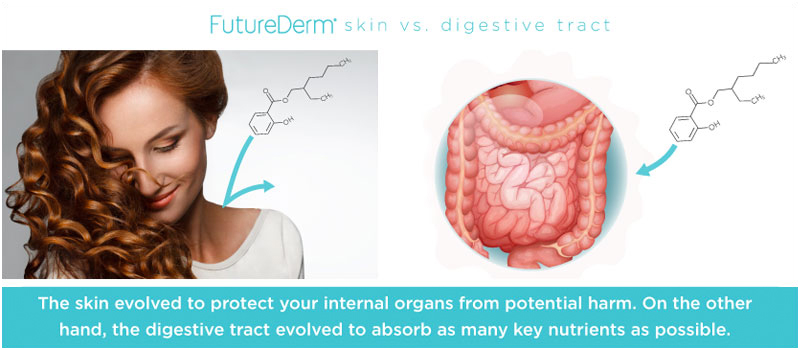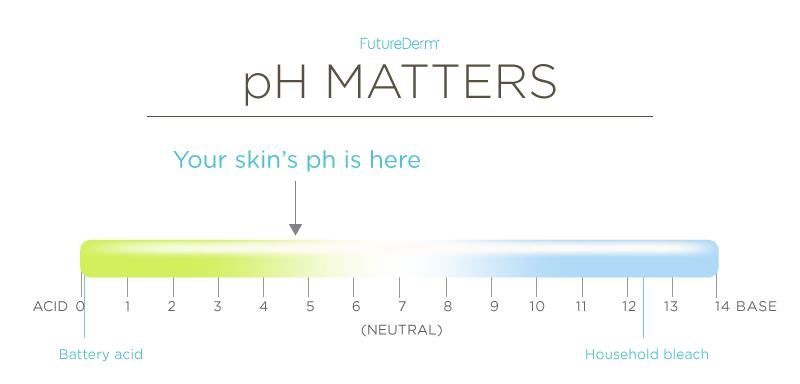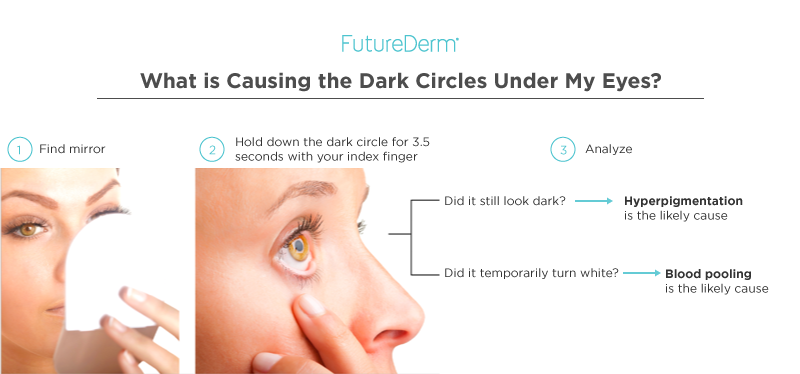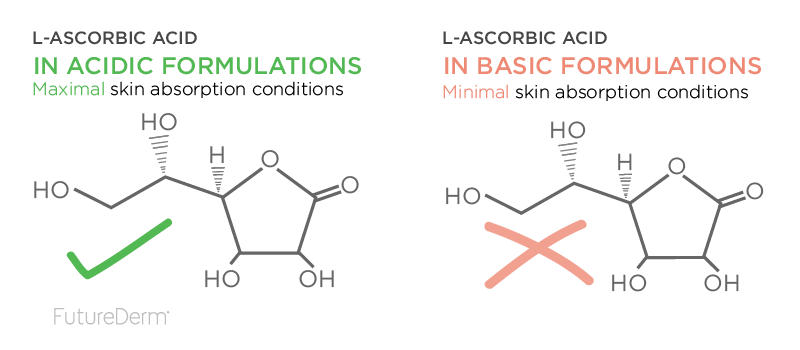Baking soda and apple cider vinegar continues to be the most-commented post on FutureDerm. Which got me thinking: with thousands of home remedies on Pinterest, someone needs to go about debunking which work and which do not from a purely scientific perspective. So, without limiting myself to baking soda and apple cider vinegar, I’ll talk about these two, plus 24 other home remedies and why they do or not work!
1.) Aspirin May Be an Acceptable Home Remedy for Mild Acne
Aspirin can technically be used to treat acne because it contains acetylsalicylic acid, which partially breaks down into the acne-fighting ingredient salicylic acid when mixed with water.
One caveat: Keep it to two tablets, crushed and dissolved thoroughly in water. Most over-the-counter products that contain salicylic acid at concentrations no greater than 2%. Using a higher concentration of salicylic acid without the watchful eye of your dermatologist can lead to irritation.
[Read More: Can I Use Neosporin, Toothpaste, or Aspirin to Treat Acne?]
2.) Baking Soda is NOT a Good Exfoliator
Baking soda is a chemical. A 100% concentration of sodium bicarbonate is known as baking soda. You can wrap it in an orange box, put it into food, and call it “natural” all you want, but the truth is the same: This is pure NaCO3. Sodium bicarb, baby.
Your skin’s pH is neutral, running between 4.5 to 6.5. Baking soda is basic, which means that it has a higher pH. When you apply a chemical like sodium bicarbonate, you’re disrupting the acid mantle of your skin, which destroys the skin’s ability to fight infection and restore its own natural chemical balance. This changes the bacterial flora composition as well as the enzymes in the upper layers of your skin. And the longer you use it, the more cumulative the damage.
People love to tell me, “But you’re not doing it right! You need to dilute the baking soda!” Even if you’re adding 50% water to baking soda, the pH level is still too alkaline, coming in at a pH of 8.
Instead, stick to something with a lower, more acidic pH, which helps the skin retain moisture. But be careful not to go too low, as stronger acids can cause skin irritation and sun sensitivity.
[Read More: Why You Absolutely Should Not Be Using Baking Soda as an Exfoliator]
3.) Baking Soda and Apple Cider Vinegar Will NOT Help Your Hair
One common belief is that natural ingredients like baking soda and apple cider vinegar leaves hair softer, cleaner, and more healthy than traditional shampoo. However, just one terrible thing about using baking soda and apple cider vinegar alone on your hair is that these do not contain any oils that can be beneficial for your hair. The best shampoos replenish natural sheen to the hair which they have just stripped as a part of the cleaning process. Baking soda and apple cider vinegar just strip the hair and leave it depleted of any moisture.
[Read more: 3 Reasons Why Baking Soda and Apple Cider Vinegar Destroy Your Hair and What to Use Instead]
4.) Bleach Will Whiten Your Teeth, But at a Cost
Just thinking about this makes my teeth hurt. If we want to go by technicalities, yes, household bleach will whiten your teeth. But let’s not forget that this is a very dangerous chemical that will poison you should you swallow it. Bleach is sodium hypochlorite, which is used to dissolve soft tissue from bones – in this case, your gums from your teeth. And while it’s used in controlled amounts during root canal irrigations, it’s been found that it actually weakens the structure of your teeth.
Rather than taking a swig of something you use to disenfect your bathroom, try using an over-the-counter product to whiten your teeth. Most use 10% carbamide peroxide, which breaks down to 3% hydrogen peroxide to release oxygen radicals that steal electrons from neighboring pigment molecules to effectively whiten your teeth. It may not be as cute or natural as using a household product, but please, c’mon readers — sodium hypochlorite is a dangerous chemical, even if it’s sitting in a bottle around your house and called a home remedy!
[Read More: Is It Dangerous to Use Household Bleach to Whiten Your Teeth?]
5.) Butter Does NOT Help to Heal Burns
This idea comes from the fact that the skin naturally produces healthy fats. These fats protect the skin.
However, if you reach for that cold stick of butter after a burn, you’re only going to exacerbate the problem. Applying butter to your burn will trap in heat and contaminants, which could lead to infection.
Instead, run your burn under cold water for 20 minutes to reduce swelling, numb the pain, and cool the burn. After, apply cold water. Do not apply ice to burns as the extreme temperature difference will further damage burned tissue. For severe burns, seek immediate medical attention (of course).
[Read More: Will Putting Butter on a Burn Help it Heal Faster?]
6.) Cling Wrap Will Help Get Rid of Water Weight
Wrapping yourself in plastic wrap might help you lose weight, though it’s only temporary. The heat from the plastic wrap will help you shed excess water weight.
Before you get all excited, keep this in mind: Some experts argue that exposure to potential endocrine disruptors in plastic wrap could be detrimental to your health. The heat from the plastic wrap could also potentially dehydrate or overheat your body.
If you’re looking to drop weight, I recommend instead that you cut back on sodium, and look into more healthy diets and exercise.
[Read More: Can You Really Lose Weight with Cling Wrap?]
7.) Coffee Grounds May Help with Cellulite, But it Depends What They are Dissolved In
Cellulite affects 85% to 98% of post-pubescent women, so it makes sense that women want a cheap at-home remedy to fix quite a pervasive problem.
When you apply coffee grounds to your skin, any pharmacological activity is coming from caffeine and theophylline, members of the methylxanthine family that break down fat. Caffeine and theophylline inhibit phosphodiesterase, which in turn activates ß-adrenergic receptors that break down triglycerides. Additionally, the caffeine acts as a diuretic to dehydrate fat cells.
So, in theory, this would work; the compounds in coffee should burn fat and dehydrate fat cells.
Unfortunately, you need a penetration enhancer for the theophylline and caffeine to penetrate the skin. Otherwise, they lay on top of the skin as a part of coffee grounds, and aren’t triggering anything at all. As much as I’d like a home remedy to work as a cure for cellulite, this works best when you have an expert formulator add some glycols or alcohol, plus hydrators, to increase the penetration of caffeine and theophylline into the skin without drying it out.
8.) Dandruff Can Be Cured with Lemon Juice, Baking Soda and Apple Cider Vinegar, and Aspirin
Dandruff is caused by a yeast-like fungus, Malassezia furfur, which causes the overproduction of skin cells. While this fungus is normally present on your skin, it can grow out of control.
To combat dandruff, home remedy advocates have said to use lemon juice, baking soda, and aspirin, but none of this makes sense from a scientific perspective. Lemon juice, to start, is highly acidic with a pH of 2. It may temporarily take down levels of M. furfur, but it will cause scalp irritation with repeated use. And any acidic effect of lemon juice is taken away with the neutralizing base baking soda (sodium bicarbonate). And while aspirin contains acetylsalicylic acid, which breaks down into the anti-dandruff agent salicylic acid, the concentration you use is not guaranteed to be the 2% necessary to take down M. furfur.
Using a shampoo and conditioner combination with zinc as zinc pyrithione will help treat it. That’s natural enough in my book.
9.) Drinking More Mineral Water DOES Hydrate Your Skin Better
Drinking water is certainly beneficial for your body, so it’s no wonder we’d think that drinking water would also hydrate our skin. Some popular dermatologists, like Dr. Howard Murad, are adamant about telling the public to be sure to consume at least 64 ounces of water each day to improve their skin.
Interestingly enough, the effect has a lot to do with water purification. At least one study shows tap water isn’t going to do much, if at all, for skin hydration. However, mineral water might. One study found that participants drinking mineral water for four weeks saw a statistically significant decrease in skin density, which researchers believe to be an indicator of hydration as the skin holds more water.
[Read More: Does Drinking Water Hydrate My Skin?]
10.) Duct Tape Can Remove Warts — But Be Careful
While it might not work as well as traditional salicylic acid treatments, putting duct tape over your plantar wart might actually help it. To be honest, researchers still aren’t sure why.
One theory suggests that the adhesiveness of duct tape might remove infected tissues of the wart until it’s gone, while another hypothesizes that “suffocating” the offending wart will deprive it of oxygen.
Of course, this isn’t going to work for every wart, and it takes time for the wart to go away. You also want to be careful that you don’t peel off the duct tape too abruptly, as this could lead to permanent scarring. But, interestingly enough, it does work.
11.) Earl Grey Tea Does NOT Help a Sunburn
Earl Grey tea is a black tea with added bergamot oil for flavoring. The reason why some people believe Earl Grey tea helps sunburns is its natural inclusion of polyphenols that will help to fight inflammation, including the ever-popular EGCG.
But it’s the inclusion of bergamot oil that destroys this theory. Bergamot oil is naturally chock full of limonene, a known skin irritant that will also increase sun sensitivity, which is the exact opposite of what you want for your sunburned skin! If you’re in need of a quick fix, opt instead for plain black or green tea. But your fastest option is honestly to use products with cortisone to fight inflammation, ibuprofen to relieve pain, and aloe vera to soothe your skin.
12.) Gelatin Consumption Does NOT Give You Healthier Nails
This comes from the idea that if you eat more protein, you’ll get stronger nails. Unfortunately, the kind of protein matters in this case. Your hair and nails are made of keratin, while gelatin is made of collagen. The composition of amino acids in keratin and collagen are significantly different.
Thus far, there hasn’t been any evidence to suggest that consumption of gelatin will strengthen your nails, with the exception of studies from the 1950s that suggested it would benefit those with psoriasis or fungal infections. One of the only studies in existence tests the effect of increased gelatin consumption on the hoofs of horses; researchers found that gelatin had no effect on hoof strength. If you’re looking to strengthen your nails, try vitamin supplements like Viviscal, made of sea protein that resembles collagen, instead.
[Read More: Can Gelatin Strengthen Nails?]
13.) Hot and Cold Water Do NOT Change the Size of Your Pores
I used to believe that this worked, years ago. Unfortunately, there really isn’t a way to change the size of your pores.
It is true that hot water will increase temperature and blood flow to the skin, allowing for easier permeability of ingredients. But despite the “steam machines” that prevail and give you beautiful skin, they aren’t actually opening your pores.
Conversely, using cold water to shrink your pores won’t work, either. According to Dr. Mary Lupo, M.D. cold water can stop your sebaceous glands from producing excess oil, but once your pores hit a certain size, there’s no shrinking them.
Read More: Can I Use Hot or Cold Temperatures to Change the Size of My Pores?
14.) Hydrogen Peroxide WILL Brighten Your Teeth
Swishing with hydrogen peroxide does brighten teeth.
Hydrogen peroxide works by releasing oxygen radicals, which stabilize themselves by stealing electrons from neighboring pigment molecules to whiten your teeth. Professional bleaching involves about 25% to 45% hydrogen peroxide. OOver-the-counter (OTC) treatments contain carbamide peroxide, which yields about 3% hydrogen peroxide. This is the same concentration found in your trusted brown bottle!
[Read More: Can You Use Hydrogen Peroxide to Whiten Your Teeth?]
15.) Lemons Should NEVER Be Applied to Your Skin
The worst case of skin I have ever seen was when a patient decided to squirt pure lemon juice onto her pale Irish skin. She had redness. Raised patches. And a painful rash that spread clear down to her neck.
Let’s talk about this scientifically. Lemon juice has a lot of attributes that can provide your skin with many benefits. It contains antioxidant,vitamin C, which can supplement your sunscreen by protecting against UVA and lighten sun spots. Lemons also contain citric acid, an alpha hydroxy acid that will slough off dead skin cells.
But the issue with lemons is the acidity. Lemons can cause irritation and photosensitization because of the citric acid. Additionally, lemons have a pH of 2, making it a little too acidic for repeated use on your skin. Keep in mind that the human body evolved to eat lemons and absorb all their nutrient goodness, not to apply all of that acidity to our delicate skin! Instead, look to products formulated with no more than 20% vitamin C as L-ascorbic acid to lighten dark spots.
[Read More: Trying to Get Rid of Those Pesky Dark Spots? What Lemon Can Do for Your Skin, and Why You Shouldn’t Use It]
16.) Mouthwash Can Help Athlete’s Foot, But Be Careful
Yep, crazy as it sounds, this one is true.
The alcohol in mouthwash acts as an antifungal agent, along with thymol and eucalyptol. This might help fight a broad range of fungi, including the one responsible for Athlete’s Foot. This might be a one-and-done for you, though. The methyl salycilate and menthol can be irritating for some person’s skin.
Specially-formulated treatments for athlete’s foot are your best bet. But if you are in dire need of a home remedy, go for it.
[Read More: Will Mouthwash Soaks Save Your Dry, Cracked Feet?]
17.) Mayonnaise Does NOT Make Hair Healthier
A simple mayonnaise recipe calls for soybean oil, egg yolk, lemon juice, and/or vinegar. The rumor that mayonnaise gives you silkier hair stems from the soybean oil and egg yolk. Often seen in moisturizers, soybean oil is an occlusive moisturizer that contains hair-strengthening lecithin and hair-silkening vitamin E. The egg yolk contains oleic acid and vitamins A, D, and E, all of which may brighten, strengthen, and protect the hair.
Unfortunately, mayonnaise also contains vinegar and lemon juice. Both of these are acids with a pH of 2. Even after the other ingredients neutralize these harsh acids, mayonnaise is still coming out at a pH of 3.0-3.5, which is too acidic for your hair.
Hair has a pH of 4-5, the vinegar and lemon juice may damage the hydrogen bonds and salt bridges in your hair over time. Plus, acid makes your hair shaft shrink. (This is why an acid rinse is the last step in hair dye kits — it closes the hair follicle, sealing in the color).
So while the soybean oil and egg yolk will technically benefit your hair, it’s likely to be outweighed by the acids.
[Read More: Should You Use a Mayonnaise Mask on Your Mane?]
18.) Milk Will NOT Give You Clearer, Brighter Skin
The main reason people use milk on their faces is because they think it’s an ultra-affordable way to get the skin-refining alpha hydroxy acid (AHA) lactic acid, an exfoliating yet moisturizing skin care ingredient. Lactic acid sells for upwards of $50 an ounce in some cases.
Unfortunately, this isn’t true. If you’re finding lactic acid in your milk, it’s past its sell-by date. When the bacteria in milk break down the sugars, this is the only time your milk will produce lactic acid.
In essence: The older your milk, the more bacteria it will contain, the more lactic acid the bacteria will create through fermentation — and the less likely you want to be drinking it or putting it on your face.
[Read More: Will Using Milk as a Toner Give You Brighter, Smoother Skin?]
19.) Neosporin Does NOT Treat Acne

Neosporin is a great ointment for when you’ve got a superficial cut or scrape because it’s an antibiotic.
However, it is important to remember that antibiotics work in different ways to target different types of bacteria. For instance, some antibiotics will attack the cell walls of susceptible organisms, whereas others will damage the DNA in the nucleus of bacteria. It all depends on where the “weak points” of bacterial species are.
Neosporin does not work against the bacterium that causes the vast majority of acne breakouts, P. acne. Plus, Neosporin and most other triple antibiotic ointments (TAOs) contain moisturizing ingredients like olive oil, which can actually clog pores and worsen acne.
So I am going to go with a big fat “no” on this one. Even if your friend or someone on Pinterest somehow had a mutation of P. acnes that went away with Neosporin use, your P. acnes could become highly resistant to the treatment over time. This treatment is not scientifically sound.
[Read More: Can I Use Neosporin, Toothpaste, or Aspirin to Treat Acne?]
20.) Olive Oil Makes a Great Hair Conditioner for Thick Hair
Now here’s a home remedy I adore. It might be due to my Italian roots, but whatever, the science backs it up too!
Olive oil contains vitamins C and E, which protects your hair against environmental damage caused by UV exposure. It is also an occlusive moisturizer, which means it will trap existing moisture in your hair.
The only issue? Olive oil can be a little more than difficult to wash out of your hair. Take a good 10 minutes to rinse, and skip it altogether if your hair is thin, since lingering olive oil residue can weigh it down.
[Read More: Can Olive Oil Be Used as a Hair Conditioner?]
21.) Preparation H May Help Some Dark Undereye Circles
This one is a little hard to explain.
Some dark circles are caused by blood pooling under the eyes. For mostly genetic reasons, some people have blood vessels that “leak” under the eyes, causing blood to accumulate and look dark under the skin. Other dark circles are caused by hyperpigmentation, or too much melanin production in the skin cells located under the eyes.
If you have dark circles caused by blood pooling, Preparation H may help. It contains the blood vessel constrictor (vasoconstrictor) phenylephrine, which will constrict the blood vessels around your eyes.
If you have dark circles caused by hyperpigmentation, Preparation H will not help.
Most of the ingredients in your standard Preparation H Ointment are occlusive agents like petrolatum and mineral oil, which will increase moisturization around the area, if nothing else. If you’re tried everything for dark circles, this might actually work.
22.) Strawberries Do NOT Whiten Your Teeth
Using strawberries to whiten your teeth comes from the idea that using acidic ingredients act as astringents, which in turn limit stains.
Some recommend using baking soda as well, but regardless of what route you’d choose, you’d be doing quite a bit of damage to your teeth! Consider the pH level of your mouth, which runs at the neutral level of 7. Regularly adding acids to your mouth will weaking your enamel, and brushing with strawberries will only accelerate that process. If you add baking soda into the mix, it will neutralize the acidity, but the abrasive brushing of the baking soda granules and strawberry seeds may stretch up your enamel.
I would not go anywhere near this home remedy.
[Read More: Can Strawberries Give You Whiter Teeth?]
23.) Tea Bags May Reduce Dark Circles and Undereye Bags
If you find yourself with puffy eyes the morning of an important event, you might want to reach for cool, caffeinated tea bags to help. The caffeine will work as a vasoconstrictor to reduce the size of veins, while the theophylline will permeate the skin to dehydate skin cells and reduce inflammation.
Of course, you have to be careful what kind of tea you choose; Earl Grey can cause irritation due to the bergamot oil. Of course, this is only a temporary fix for a temporary problem, so I’d look into lifestyle changes or an eye cream to reduce the amount of times you wake up with puffy eyes.
[Read More: Will Tea Bags Reduce Eye Puffiness and Dark Circles?]
24.) Toothpaste Does NOT Treat Acne
The idea that toothpaste treats acne stems from the good ol’ days, when toothpaste included the mineral zinc, which can dry out pimples rather effectively. But the zinc has been replaced with other agents to make toothpaste look white, meaning that you end up with minty goo on your face — and still have pimples.
Your skin could actually get worse from applying toothpaste to it. Toothpaste contains the irritating and drying ingredients sodium lauryl sulfate and triclosan. By putting such a drying combination on your acne, you could further exacerbate your acne lesions.
[Read More: Can I Use Neosporin, Toothpaste, or Aspirin to Treat Acne
25.) Vitamin C Serums Made at Home are Just as Effective: Usually Not True
Although it can be rather tempting to make your own vitamin C serums, it’s really not the way to go.
First, you run into the issue of pH levels. As I mentioned above, the pH level of your skin rests somewhere between 4.5 to 6.5, making it mildly acidic. In order for the vitamin C to effectively enter your skin, it has to have a pH lower than 3.5, but if you go too low – say, at 2.2, which is the level of 5% L-ascorbic acid mixed with water – you risk skin irritation, sun sensitization, and hyperpigmentation. So you need to be careful and test the pH religiously.
Second, L-ascorbic acid is very unstable, as it degrades in light, heat, and air. When formulating vitamin C serums, cosmetic chemists are careful to ensure that the L-ascorbic acid is not exposed to these elements.
Lastly, even when you are careful with pH and environmental exposures, there is the issue of penetration enhancement. But when you add penetration enhancers into skin care, like alcohol or glycols, then you run the risk of drying your skin out, so you need glycerin or another mild hydrator. Getting those concentrations right is also no picnic.
You can do what you want in this regard, but I only create my vitamin C serum from a manufacturer with all of the certifications and credentials to ensure each bottle is in the right pH range, stabilized, includes penetration enhancers and hydrators, and free of bacteria and other pathogens.
[Read More: 3 Reasons Why Making Your Own Vitamin C Serum Isn’t Safe or Effective]
Bottom Line
While there’s usually some truth to home remedies, many home remedies are based on the erroneous belief that nutritious food must be healthy for your skin as well. But nothing could be further from the truth. The skin evolved to protect the bodily organs from outside harm. The skin produces a natural, delicate acid mantle that is easily disrupted by anything too far outside of its neutral pH range. On the other hand, the digestive tract evolved to absorb. The digestive tract is extremely acidic, with a pH of 2, and can handle a much larger range of foods, from acid-forming meats and fatty acids to alkaline leafy greens and fruits. [Read more: Tomatoes, Lemon, Olive Oil, and More: Are They Food, Skin Care, or Both?]
Most home remedies mean well. We all want to do what is best for our families and our bodies. But home remedies often fail to look at other factors in the treatment that could cause infection, irritation, or other issues, such as the limonene in Earl Grey Tea, leading to sun sensitivity. We need to remember that even the friendliest-sounding home remedy, like baking soda and apple cider vinegar, is still comprised of the chemicals sodium bicarbonate and acetic acid, and needs to be evaluated accordingly!














